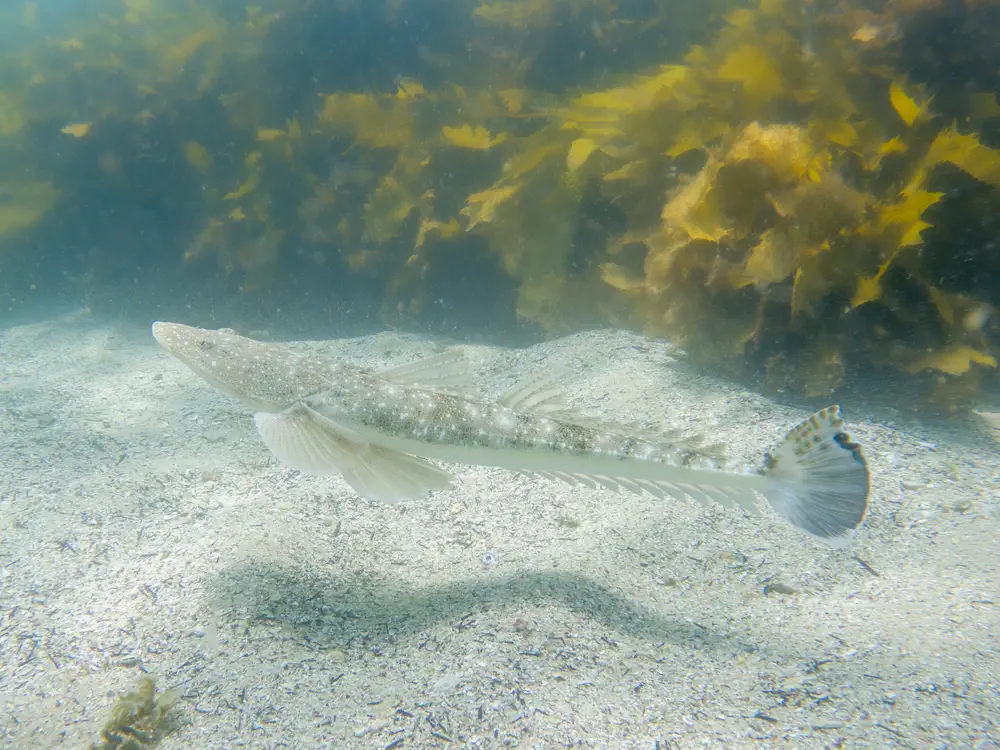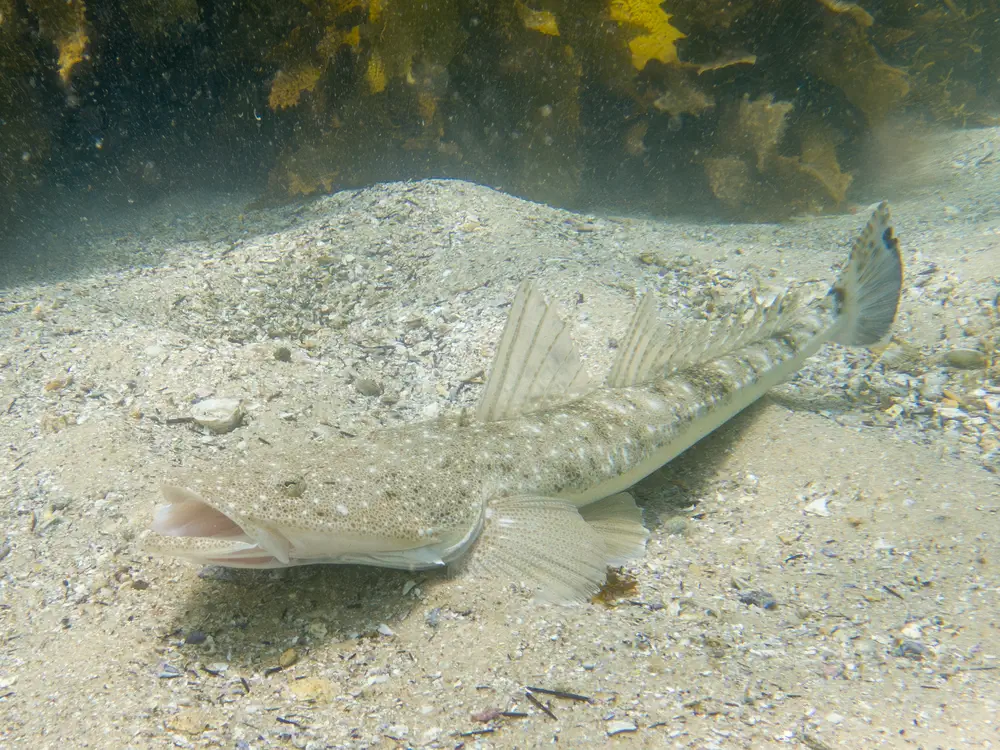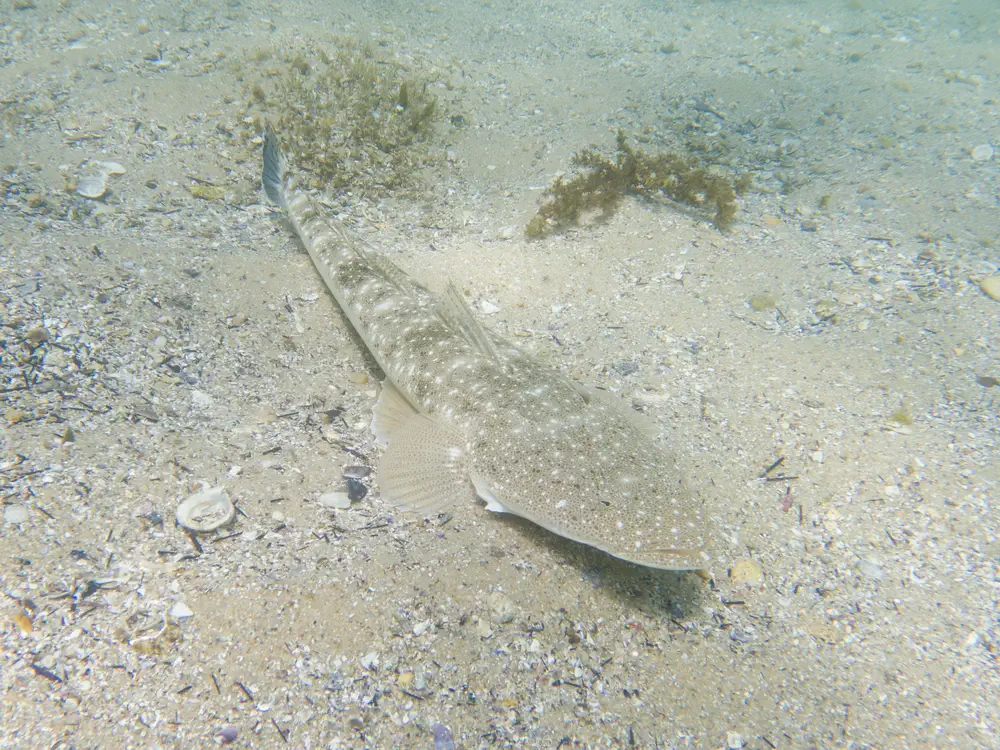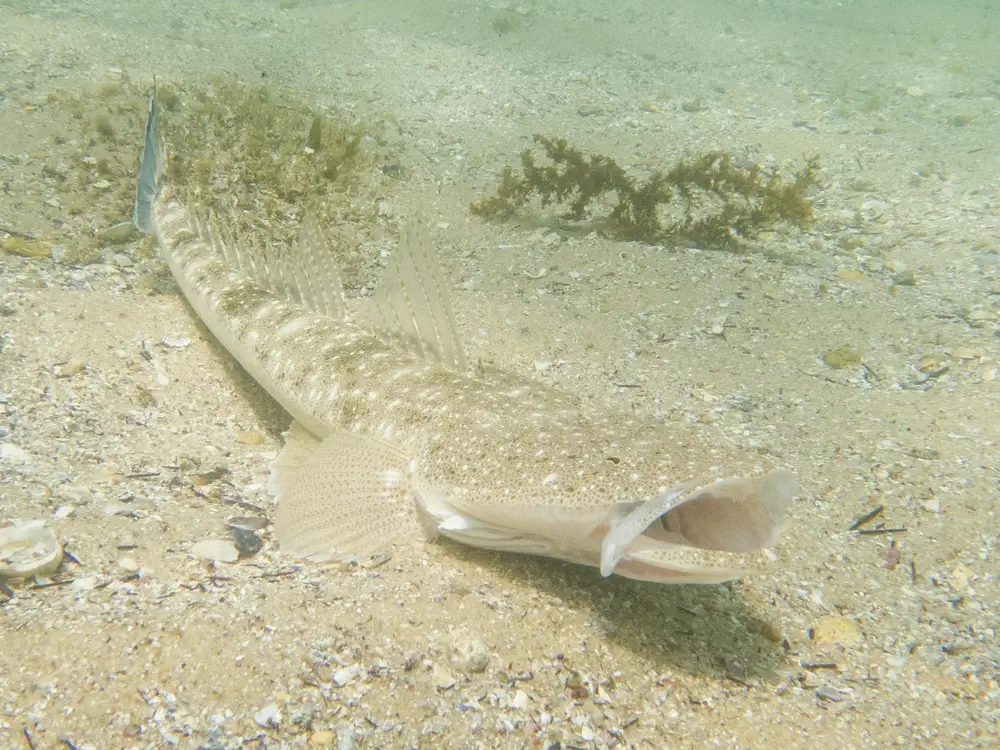The dusky flathead (Platycephalus fuscus) is a fascinating and iconic species found along Australia’s eastern coastline, beloved by anglers and marine enthusiasts alike. Known for its distinctive appearance, widespread distribution, and remarkable behavior, this ambush predator thrives in estuarine and coastal environments. As the largest member of the flathead family, it plays a vital ecological role and contributes significantly to recreational and commercial fishing.

Identification
The dusky flathead is a distinctive species of flathead recognized for its unique morphology and coloration. Its body is elongated and dorsally flattened, with a broad head featuring sharp preopercular spines, which are slightly venomous and can inflict cuts if handled carelessly. Both eyes are positioned on top of the flattened head, allowing for excellent binocular vision essential for its ambush hunting strategy. The dusky flathead is camouflaged to blend into its environment, with body coloration varying from sandy to dark brown or black, often featuring dark blotches or bars. Its pectoral fins are adorned with rows of fine brown spots, while the caudal fin is characterized by a bluish-grey lower half and a distinctive dark spot near the outer central margin.

Further distinguishing features include its prominent fins and teeth. The dorsal fins are marked with brown spots forming interrupted bands, and the caudal fin displays a spotted pattern on the upper half. The mouth is large and wide, equipped with small villiform teeth and short canines, suitable for capturing prey such as small fish and crustaceans. Measuring up to 120 cm in length and weighing up to 15 kg, the dusky flathead is the largest species of flathead found in Australia, commonly inhabiting estuarine and coastal environments from Queensland to Victoria. These physical and ecological traits make the dusky flathead an easily identifiable and notable species within its habitat range.
Distribution and Conservation
The dusky flathead (Platycephalus fuscus) is distributed along the east coast of Australia, from Cairns in Queensland to the Gippsland Lakes in Victoria, and possibly further west. It inhabits a variety of coastal and estuarine environments, including sandy, muddy, and seagrass-covered areas, as well as sheltered reefs and estuarine lakes. This species is commonly found at depths ranging from shallow intertidal zones to about 30 meters.
Want to identify that fish? Gerald R. Allen’s field guide has the largest species coverage of them all, and is very well illustrated.

As a popular target for recreational and commercial fishing, conservation measures have been implemented to protect its populations. Regulations, such as size limits and catch-and-release practices for individuals over 70 cm, aim to safeguard breeding stocks. However, research indicates that mid-sized females (50-60 cm) are the most reproductively active, emphasizing the importance of conserving these fish to ensure sustainable populations. The combination of fishing pressure and habitat dependency underscores the need for careful management of this iconic species.
Behaviour and Character
The dusky flathead (Platycephalus fuscus) is an ambush predator with a behavior finely tuned to its environment. It often buries itself in sand or mud, using its flattened body and adaptive coloration to blend seamlessly into its surroundings. This camouflage allows the dusky flathead to lie motionless, with only its eyes visible, waiting for unsuspecting prey such as small fish, prawns, and crustaceans to drift close. When prey approaches, it strikes rapidly, leveraging its large, wide mouth to engulf its target.

Despite being primarily solitary, dusky flathead may form loose aggregations, particularly in favorable feeding or spawning conditions. Their ability to remain still for extended periods and their sudden bursts of explosive motion characterize them as patient and opportunistic hunters within their estuarine and coastal habitats.
From Reefranger
Dusky flatheads are a common sight across New South Wales and Queensland. Most I have encountered were at Shelly Beach, where they can often be seen resting on the bottom. While they supposedly grow to over a meter, I have only seen species smaller than that so far.
Distribution
From southern Queensland to Victoria.
Facts
Max Size: 120 cm
Depth: 1-25m
Lifespan: Up to 20 years
Risk and Safety
Has venomous spikes but avoids contact.
Conservation
IUCN Status: Least Concern
Population: Trend Unknown
